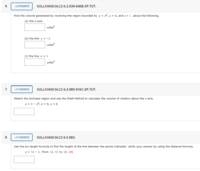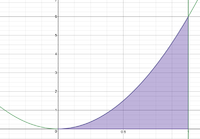You are using an out of date browser. It may not display this or other websites correctly.
You should upgrade or use an alternative browser.
You should upgrade or use an alternative browser.
Test help please :(
- Thread starter ng3
- Start date
- Joined
- Nov 24, 2012
- Messages
- 3,021
Hello, and welcome to FMH! 
Have you been given permission to seek outside help for this test? If so, do you have any work to show for any of these questions? We actually prefer that you post one question per thread (so the threads don't become convoluted), and show what you've done so far so we know where you're stuck.
Have you been given permission to seek outside help for this test? If so, do you have any work to show for any of these questions? We actually prefer that you post one question per thread (so the threads don't become convoluted), and show what you've done so far so we know where you're stuck.
- Joined
- Nov 24, 2012
- Messages
- 3,021
Honestly sir I'm way behind because of baseball season. And wasn't able to go to much of my Cal 2 class.
Picture the region in the graph I posted revolving about the \(x\)-axis, and we are going to slice up the resulting volume into a bunch of really thin disks all of equal thickness. The slicing will be parallel to the \(y\)-axis. Can you see that the radius \(r\) of an arbitrary disk is equal to the distance from the upper bound of the region to the lower bound, that is:
[MATH]r=6x^2-0=6x^2[/MATH]
And so, the volume of such a disk is given by:
[MATH]dV=\pi r^2\,dx=\pi(6x^2)^2\,dx=36\pi x^4\,dx[/MATH]
And so, to find the total volume of the solid of revolution, we add up all the disks via integration:
[MATH]V=36\pi\int_0^1 x^4\,dx[/MATH]
Does this make sense?
YES!Picture the region in the graph I posted revolving about the \(x\)-axis, and we are going to slice up the resulting volume into a bunch of really thin disks all of equal thickness. The slicing will be parallel to the \(y\)-axis. Can you see that the radius \(r\) of an arbitrary disk is equal to the distance from the upper bound of the region to the lower bound, that is:
[MATH]r=6x^2-0=6x^2[/MATH]
And so, the volume of such a disk is given by:
[MATH]dV=\pi r^2\,dx=\pi(6x^2)^2\,dx=36\pi x^4\,dx[/MATH]
And so, to find the total volume of the solid of revolution, we add up all the disks via integration:
[MATH]V=36\pi\int_0^1 x^4\,dx[/MATH]
Does this make sense?
- Joined
- Nov 24, 2012
- Messages
- 3,021
YES!
So, what do you get for the volume?
- Joined
- Nov 24, 2012
- Messages
- 3,021
You cannot evaluate the definite integral in the formula for the volume I posted?
[MATH]V=36\pi\int_0^1 x^4\,dx[/MATH]
As far as definite integral go, this is arguably one of the simplest types. I don't say that to shame you or make you feel bad, I'm trying to get a feeling for what you can do when it comes to these problems.
D
Deleted member 4993
Guest
Mark, Once again you have proven that you have infinite patience....You cannot evaluate the definite integral in the formula for the volume I posted?
[MATH]V=36\pi\int_0^1 x^4\,dx[/MATH]
As far as definite integral go, this is arguably one of the simplest types. I don't say that to shame you or make you feel bad, I'm trying to get a feeling for what you can do when it comes to these problems.
...or is it only (36/5)*[math]\pi [/math] ..... just an irrational amount either way....
topsquark
Senior Member
- Joined
- Aug 27, 2012
- Messages
- 2,269
If you don't know how to answer this question I have grave doubts about how ready you are for this test. I'd speak to your instructor about this. Not to mention spending your time on baseball and not on your class...
-Dan



